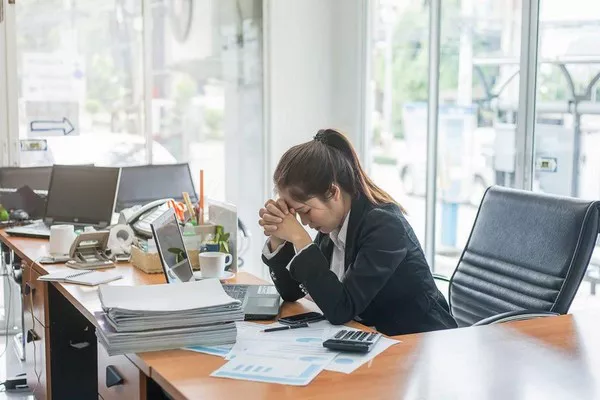Homophobia is a term that describes a range of negative attitudes, beliefs, and behaviors directed towards individuals who identify as LGBTQ+ (lesbian, gay, bisexual, transgender, queer, and others). It encompasses feelings of fear, hatred, or aversion towards people based on their sexual orientation or gender identity. This article will explore the meaning of homophobia, its manifestations, underlying causes, and the profound effects it has on individuals and society as a whole.
What is Homophobia?
Homophobia is derived from the Greek word “homo,” meaning “same,” and the Latin word “phobia,” meaning “fear.” Therefore, homophobia literally translates to a fear of sameness, particularly in relation to sexual orientation. However, it is more commonly understood as a fear or hatred of people who identify as LGBTQ+. Homophobia can manifest in various forms, including:
Verbal Abuse: This includes derogatory comments, slurs, and insults directed at LGBTQ+ individuals. Such language can be harmful and perpetuates negative stereotypes.
Discrimination: Homophobia can lead to discriminatory practices in various areas, including employment, housing, healthcare, and education. LGBTQ+ individuals may face barriers in accessing services or opportunities due to their sexual orientation.
Social Exclusion: Individuals may be ostracized or excluded from social groups, events, or activities because of their sexual orientation. This exclusion can lead to feelings of isolation and loneliness.
Violence: In extreme cases, homophobia can result in physical violence against LGBTQ+ individuals. Hate crimes motivated by homophobia are a serious concern in many societies.
Internalized Homophobia: This occurs when LGBTQ+ individuals internalize negative societal attitudes towards their own sexual orientation. It can lead to feelings of shame, self-hatred, and mental health issues.
The Spectrum of Homophobia
Homophobia exists on a spectrum, ranging from subtle biases to overt acts of violence. Understanding this spectrum is crucial for recognizing the various forms homophobia can take:
Subtle Homophobia: This includes microaggressions, which are small, often unintentional comments or actions that convey negative attitudes towards LGBTQ+ individuals. For example, saying “that’s so gay” to describe something negative reinforces harmful stereotypes.
Institutional Homophobia: This refers to policies or practices within institutions that disadvantage LGBTQ+ individuals. For instance, some workplaces may lack inclusive policies, leading to discrimination against LGBTQ+ employees.
Cultural Homophobia: Cultural norms and values can perpetuate homophobia. For example, media representations that portray LGBTQ+ individuals negatively can influence public perceptions and reinforce stereotypes.
Overt Homophobia: This includes explicit acts of violence, hate speech, and aggressive actions directed at LGBTQ+ individuals. Hate crimes motivated by homophobia are a serious and tragic manifestation of this form.
Causes of Homophobia
Understanding the roots of homophobia is essential for addressing and combating it. Several factors contribute to the development of homophobic attitudes:
Cultural and Societal Norms
Cultural and societal beliefs play a significant role in shaping attitudes towards LGBTQ+ individuals. Many cultures have historically viewed heterosexuality as the norm, leading to the marginalization of non-heterosexual orientations. Societal norms that promote traditional gender roles can also contribute to homophobia. For example, beliefs that associate masculinity with heterosexuality can lead to the stigmatization of gay men.
Lack of Education and Awareness
Many individuals hold homophobic beliefs due to a lack of education and understanding about LGBTQ+ issues. Misconceptions and stereotypes can perpetuate fear and aversion. For instance, some people may believe that being gay is a choice or a mental illness, leading to negative attitudes towards LGBTQ+ individuals.
Fear of the Unknown
Fear often stems from unfamiliarity. People who have little exposure to LGBTQ+ individuals may develop fears based on stereotypes or misinformation. This fear can lead to discomfort and aversion, resulting in homophobic attitudes.
Religious Beliefs
Some religious beliefs and interpretations of religious texts can contribute to homophobia. Certain religious groups may view homosexuality as sinful or immoral, leading to negative attitudes and discrimination against LGBTQ+ individuals. It is important to note that not all religious individuals or groups hold homophobic views; many religious communities are supportive of LGBTQ+ rights.
Influence of Family and Peers
Family upbringing and peer influence can significantly shape an individual’s attitudes towards LGBTQ+ individuals. If a person grows up in an environment that promotes homophobic beliefs, they may internalize these views. Conversely, supportive families and friends can foster acceptance and understanding.
The Impact of Homophobia
The consequences of homophobia are profound and far-reaching, affecting individuals, communities, and society as a whole. Here are some of the key impacts:
Mental Health Issues
Homophobia can lead to severe mental health issues for LGBTQ+ individuals. The stress of facing discrimination, violence, and social exclusion can result in:
Depression: Many LGBTQ+ individuals experience depression due to the stigma and discrimination they face. The feeling of being marginalized can lead to hopelessness and despair.
Anxiety: Constant fear of rejection or violence can result in heightened anxiety levels. LGBTQ+ individuals may feel unsafe in their communities or workplaces.
Suicidal Ideation: Studies have shown that LGBTQ+ individuals are at a higher risk of suicidal thoughts and attempts compared to their heterosexual peers. The cumulative effects of homophobia can lead to feelings of worthlessness and despair.
Social Isolation
Homophobia can lead to social isolation for LGBTQ+ individuals. Fear of rejection or discrimination may cause them to withdraw from social interactions, leading to loneliness. This isolation can further exacerbate mental health issues and hinder personal growth.
Economic Disparities
Discrimination based on sexual orientation can lead to economic disparities for LGBTQ+ individuals. They may face barriers to employment, resulting in lower income levels and limited career advancement opportunities. This economic disadvantage can perpetuate cycles of poverty and inequality.
Violence and Hate Crimes
Homophobia can result in violence against LGBTQ+ individuals. Hate crimes motivated by sexual orientation are a serious issue in many countries. These acts of violence not only harm individuals but also create a climate of fear within LGBTQ+ communities.
Impact on Relationships
Homophobia can strain relationships within families and communities. Families may struggle to accept LGBTQ+ members, leading to conflict and estrangement. This lack of acceptance can have lasting effects on mental health and well-being.
Combating Homophobia
Addressing and combating homophobia requires collective efforts from individuals, communities, and institutions. Here are some strategies to promote acceptance and understanding:
Education and Awareness
Education is a powerful tool in combating homophobia. Promoting awareness about LGBTQ+ issues can help dispel myths and stereotypes. Schools, workplaces, and community organizations should provide training and resources to foster understanding and acceptance.
Supportive Policies
Institutions should implement policies that promote inclusivity and protect LGBTQ+ individuals from discrimination. This includes workplace anti-discrimination policies, inclusive healthcare practices, and support for LGBTQ+ youth in schools.
Community Engagement
Engaging with LGBTQ+ communities can foster understanding and acceptance. Participating in LGBTQ+ events, such as pride parades, can help bridge gaps and promote solidarity. Building relationships with LGBTQ+ individuals can challenge stereotypes and foster empathy.
Advocacy and Activism
Advocacy for LGBTQ+ rights is essential in combating homophobia. Supporting organizations that work towards equality and justice can help create systemic change. Individuals can also advocate for policy changes at local, state, and national levels.
Challenging Homophobic Behavior
Individuals can play a crucial role in challenging homophobic behavior when they encounter it. Speaking out against discriminatory comments or actions can help create a culture of acceptance. Allies can support LGBTQ+ individuals by standing up against homophobia in their communities.
The Role of Allies
Allies play a vital role in combating homophobia. An ally is someone who supports and advocates for LGBTQ+ rights without necessarily identifying as LGBTQ+ themselves. Here are some ways allies can make a difference:
Educate Themselves: Allies should take the initiative to educate themselves about LGBTQ+ issues, terminology, and the challenges faced by the community. This knowledge can help them become more effective advocates.
Listen and Support: Allies should listen to the experiences of LGBTQ+ individuals and provide support. Validating their feelings and experiences can help create a safe space for open dialogue.
Speak Out: Allies should speak out against homophobic comments and behaviors, whether in personal conversations or public settings. This demonstrates solidarity and encourages others to do the same.
Promote Inclusivity: Allies can promote inclusivity in their workplaces, schools, and communities. This includes advocating for policies that protect LGBTQ+ individuals and creating welcoming environments.
Be Visible: Being an openly supportive ally can encourage others to join the fight against homophobia. Visibility can help normalize LGBTQ+ acceptance and foster understanding.
Conclusion
Homophobia is a complex issue that impacts individuals and society on multiple levels. It encompasses a range of negative attitudes and behaviors towards LGBTQ+ individuals, leading to significant mental health challenges, social isolation, and discrimination. Understanding the meaning and implications of homophobia is essential for fostering a more inclusive and accepting society.
By promoting education, awareness, and advocacy, we can work towards combating homophobia and creating a world where everyone, regardless of their sexual orientation or gender identity, is treated with dignity and respect. Allies play a crucial role in this journey, and their support can make a meaningful difference in the lives of LGBTQ+ individuals. Together, we can challenge homophobia and build a more inclusive future for all.
Related topics:




























